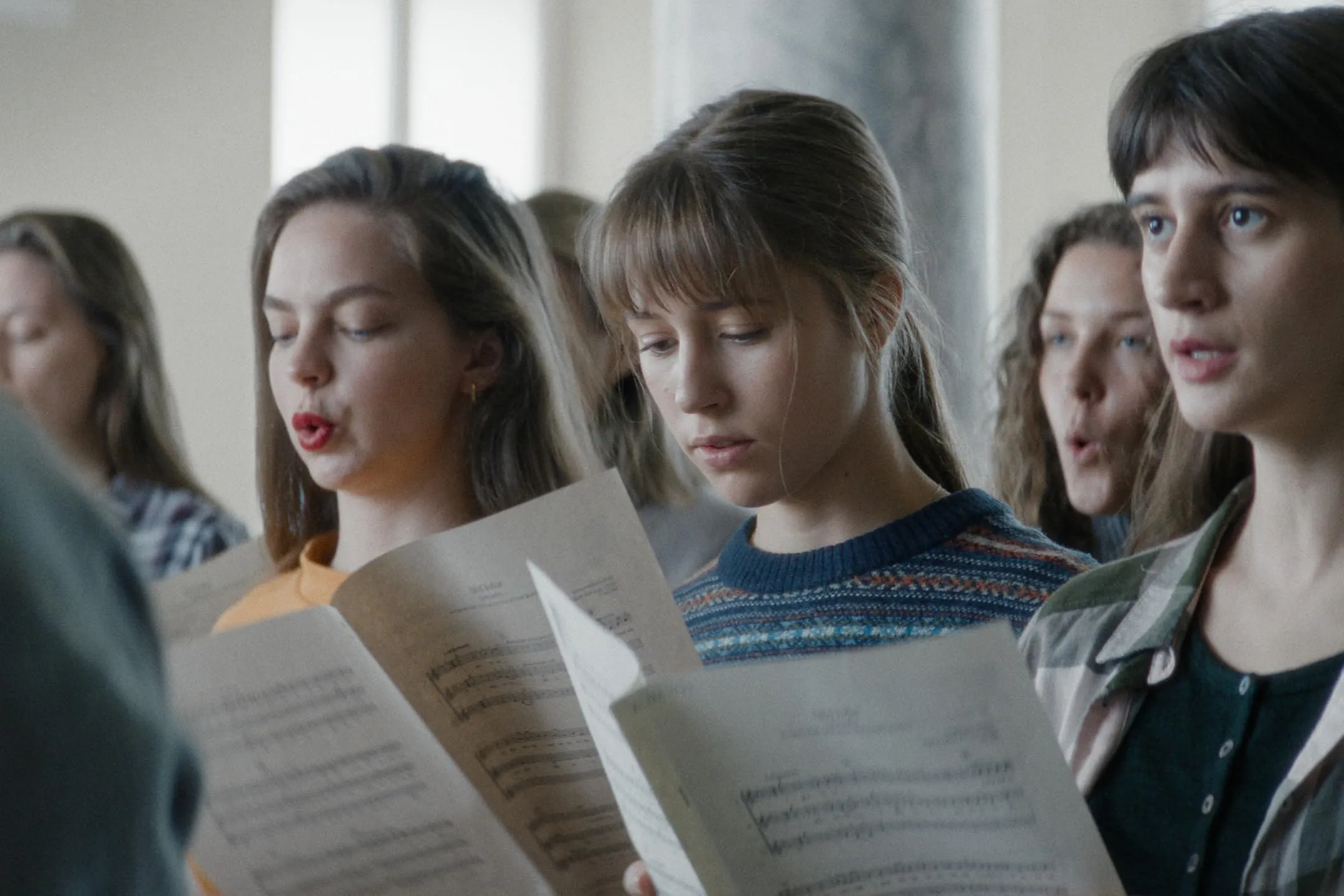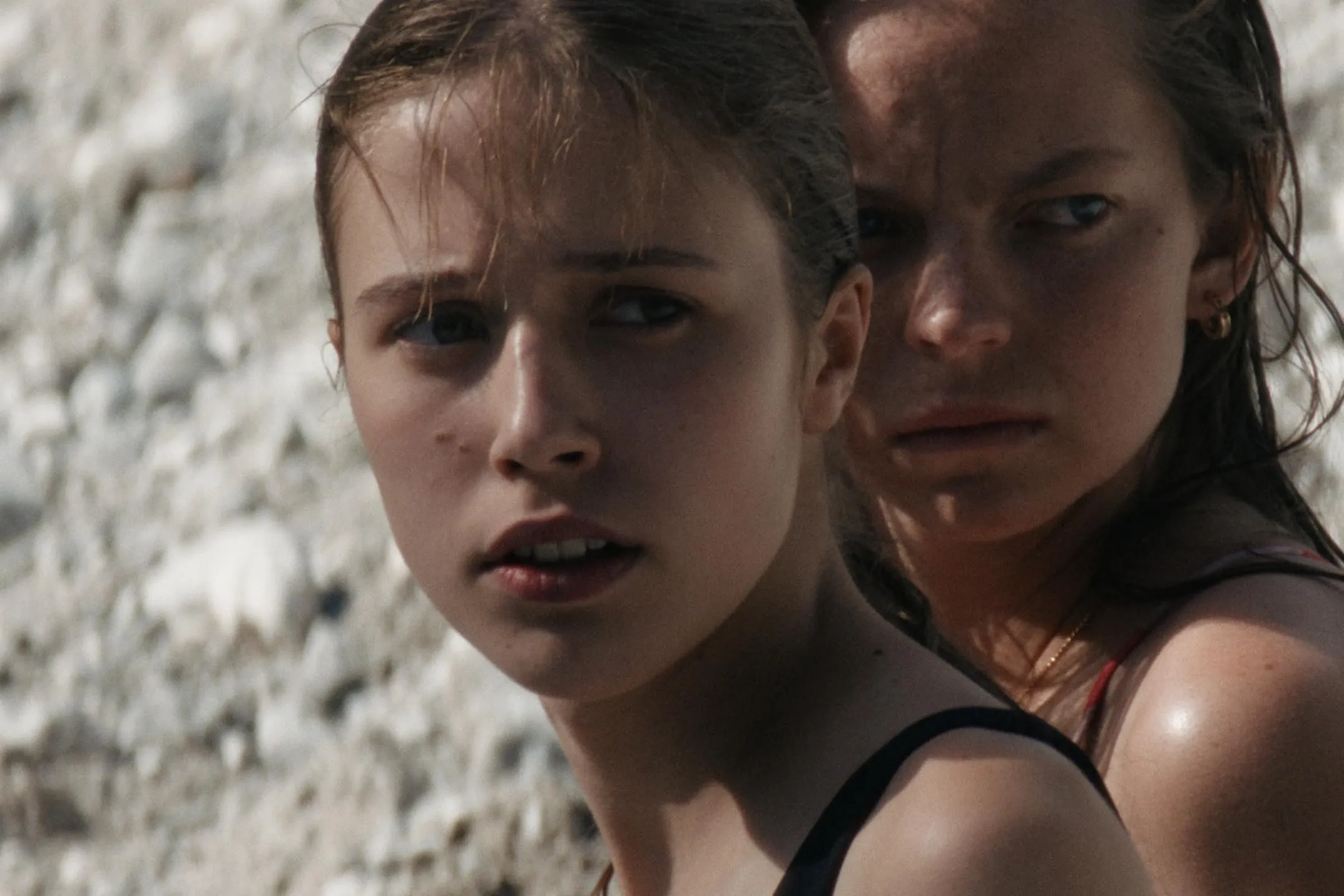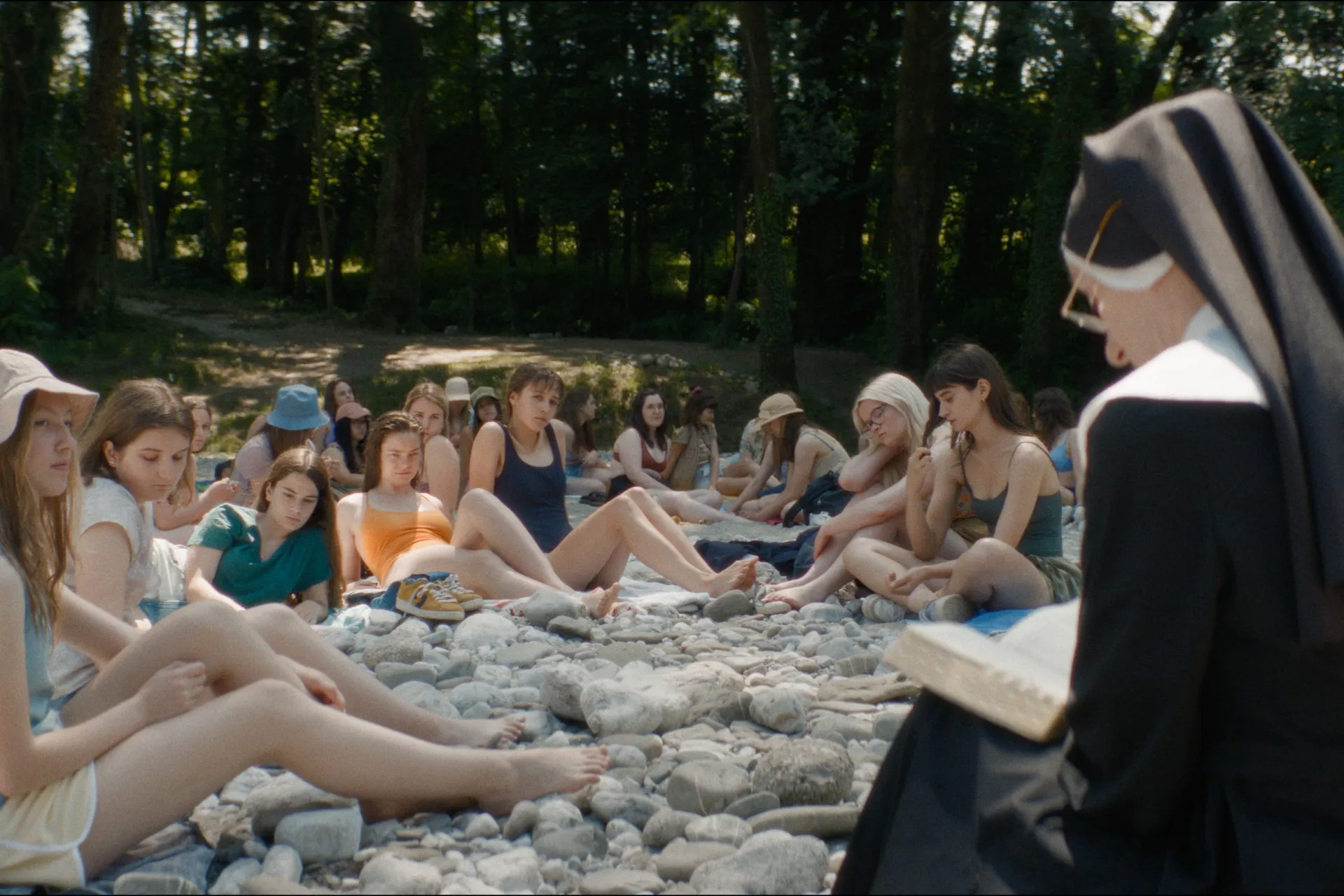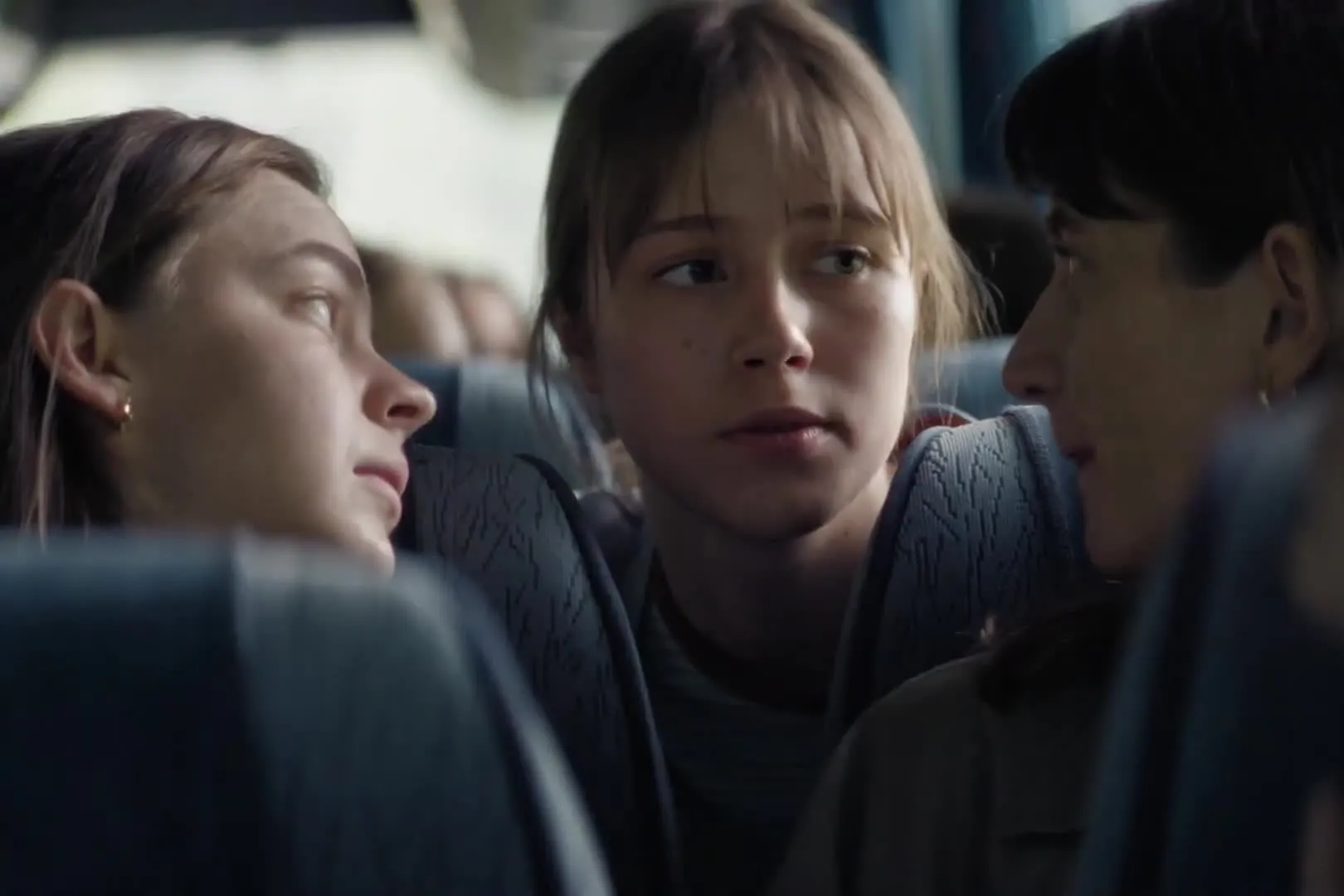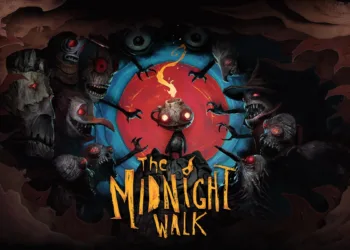Urška Djukić’s debut feature, Little Trouble Girls, emerges as a quietly daring exploration of adolescence. Its title—lifted from a 1995 Sonic Youth song that underscores the closing credits—hints at the tension between compliance and concealed impulses. The narrative centers on Lucia, a reserved sixteen‑year‑old who joins her Catholic school’s all‑girls choir, only to find that the ritual of song unlocks unspoken desires and unsettles inherited beliefs.
When the choir embarks on an intensive weekend retreat at a countryside convent, Lucia’s tentative world expands. She’s drawn into the orbit of Ana‑Maria, a poised senior whose playful provocations—applying forbidden lipstick, teasing secrets of womanhood—open doors to both camaraderie and subtle rivalry. As dusty hymns give way to whispered gossip beneath ancient stone walls, Lucia confronts her own curiosity: a stolen glance at a passing workman, a private fantasy in the moonlit woods.
Djukić’s staging carries echoes of early French New Wave—close‑up portraits, fluid camera movements—filtered through a twenty‑first‑century sensibility. The film premiered in Berlin’s new Perspectives strand, signaling its appeal to arthouse audiences hungry for fresh voices. With its lean running time and poised visual language, Little Trouble Girls stakes a claim as a cultural artifact of youthful tension, where faith and flesh collide in unexpected harmony.
Shifting Chords: Narrative & Structure
Djukić opens with a flickering montage of Lucia’s world in micro—close‑ups of measured breaths, a school uniform’s crisp collar, the rough bark of a roadside tree. These fragments, reminiscent of Truffaut’s playful jumps in The 400 Blows, sweep us into Lucia’s drifting consciousness.
The story snaps into focus when Lucia arrives at choir practice and Ana‑Maria presses a forbidden swipe of lipstick to her lips. That moment—equal parts thrill and shame—propels the film’s pulse. On the bus to the convent, whispered rounds of truth‑or‑dare chatter layer atop a rising montage of renovation sounds: hammers, whirring drills, muted conversations. The unseen workmen become characters in Lucia’s imagination, knotting her anxiety and attraction into one knot.
As Ana‑Maria teases Lucia toward a shy crush on the burly restoration worker, tension builds in quiet beats. The screenplay sidesteps linear sequencing by looping back to earlier stares or repeated lines of hymn, each iteration a shade more charged. It feels a bit like a jazz solo—my own jazz fixation here—where a single riff transforms with fresh inflection.
The film’s climax arrives during choir rehearsal. Under the conductor’s piercing gaze, Lucia stumbles through a solo, and her classmates recoil—her desires laid bare by a misplaced note. Suddenly, the narrative fractures: rapid time‑lapse of blooming flowers, a breathless swirl of robes and shadows.
Rather than a tidy wrap‑up, Djukić lets a Sonic Youth lyric linger: “you’ll never know what I feel inside.” It’s a clever structural flourish—ambiguous as the final note in a free‑form improvisation. Between these carefully timed cuts and subjective point‑of‑view shots, Little Trouble Girls remixes familiar coming‑of‑age steps into something fresh, unpredictable and vividly alive.
Portraits in Harmony and Discord
Lucia (Jara Sofija Ostan) greets every frame with a tremulous curiosity. Her wide‑eyed gaze and plain school uniform suggest someone still growing into her own skin. In early scenes, Lucia seems adrift—her posture tight, words few—but Ostan eases her toward moments of charged self‑awareness: a lingering look at Ana‑Maria’s lipstick, a stolen breath at the sight of the restoration worker. That arc from shy observer to quietly emboldened participant anchors the film’s emotional core.
Ana‑Maria (Mina Švajger) rules the frame like a magnetic field. Švajger’s feline poise—shoulders back, speech swift—makes her both protector and provocateur. When she defends Lucia from teasing, there’s warmth; when she goads her into daring acts, there’s mischief. Their dynamic recalls Truffaut’s playful mentorships, yet Švajger’s charm carries an undercurrent of challenge that keeps Lucia off balance.
Choir Conductor (Saša Tabaković) looms as an austere force. His voice cuts through rehearsals with surgical precision, demanding perfection. Tabaković times his rebukes so they echo long after the music stops, leaving Lucia exposed in front of her classmates. It’s a performance that channels Hitchcockian tension in an unlikely setting.
At home, Lucia’s mother (Nataša Burger) embodies the weight of tradition. Her firm “no” on lipstick and abrupt channel‑change at a love scene feel both protective and suffocating, portraying a parent caught between love and fear of modern impulses.
Sister Magda and the Restoration Worker operate as silent catalysts. The nun’s frank conversation on celibacy offers Lucia a rare mirror for her questions. The worker—a mute symbol of untouched desire—stirs Lucia’s first real awareness of longing.
Across the choir, moments of whispered solidarity trade places with sharp exclusion. The girls form shifting circles of support and mockery, capturing the tender cruelty of adolescence in every glance and hushed laugh.
Sacred Tension: Themes & Symbolism
At its heart, Little Trouble Girls stages a silent clash between devout ritual and burgeoning longing. Choir hymns echo off convent walls, their measured cadences upended by Lucia’s furtive glances and racing pulse. That interplay recalls a jazz solo, where a steady rhythm gives way to spontaneous riffing—faith meets desire in moments that feel both choreographed and wildly alive.
Grapes serve as a vivid motif for penance and release. In one scene, the girls choke back bitter, unripe fruit to atone for imagined sins. Later, Lucia gleefully feasts on glossy, ripe grapes at a market stall, as if reclaiming her own appetite. Those turns capture the tension between inherited guilt and the heady freedom of self‑discovery.
Lipstick and whispered gossip anchor the film’s coming‑of‑age rituals. Ana‑Maria dabs rouge on Lucia’s lips—an act that undercuts the stern rules of her upbringing—while whispered confessions about first periods mark social rites of passage. The power to speak one’s truth here feels as potent as any sacrament.
Power and belonging shift like shadows among the choir girls. Ana‑Maria moves from gracious defender to playful tormentor, her shifting role shaping Lucia’s confidence. Those dynamics echo larger cultural anxieties: a generation testing old hierarchies by both embracing and teasing each other’s boundaries.
Nature emerges as a mirror for sexual awakening. Time‑lapse montages of flowers unfurl, their petals bursting in slow motion as Lucia’s curiosity blossoms. A deer glimpsed through the bus window contrasts with the sight of a bathing workman, innocence and the male gaze intertwined in a single frame.
The film concludes without tidy resolution. As the Sonic Youth lyric plays—“you’ll never know what I feel inside”—Lucia’s fate remains suspended. That final ambiguity speaks to the complexity of forging identity amid conflicting loyalties to faith, flesh and friendship.
Frame by Frame: Technical Craft
Urška Djukić’s direction trusts the audience to piece together Lucia’s inner world. She opts for lean storytelling—each gesture and glance carries weight, as in early Céline Sciamma films—letting silence speak where exposition might feel heavy.
Moments of sly humor—Ana‑Maria’s playful tweaks of Lucia’s hair, a hushed giggle in the choir loft—sit alongside sudden philosophical asides, such as Lucia pausing mid‑rehearsal to absorb a hymn’s echo. That balance feels akin to the gentle provocations in Godard’s work, nudging viewers into active observation.
Lev Predan Kowarski’s cinematography aligns us intimately with Lucia. He composes a series of extreme close‑ups—rippling breaths, glossed lips, the fleck of sunlight in her eyes—that recall Jean‑Pierre Melville’s intense focus on single details. Exteriors glow with summery warmth, light filtering through leaves like a jazz pianist’s improvised runs; interiors, by contrast, sit in half‑shadow, as if the convent itself is unsure whether to embrace or rebuke Lucia’s curiosity.
Vlado Gojun’s editing establishes a subtle rhythm. Rehearsal sequences bleed into whispered gossip and then into dreamlike vignettes—time‑lapse flowers opening, shadowy robes swirling—much like a jazz solo weaving through motifs. These cuts compress emotional shifts without feeling rushed, preserving both tension and space for reflection. At times I was reminded of the elliptical methods Greta Gerwig employed in Lady Bird, where small edits carry an outsized emotional charge.
Julij Zornik’s sound design completes the immersion. He amplifies intimate sounds—chewing grapes, inhaled breaths, the soft rustle of fabric—so that everyday noise becomes visceral texture. Traditional choir hymns cradle early scenes, then give way to muted folk songs and sparse original motifs, underscoring Lucia’s shifting inner melody.
Strategic silences punctuate key moments—no score, just the hush of anticipation—letting us feel her pause before every choice. Together, these elements craft an atmosphere both subtle and electric, inviting audiences to lean in and listen as much as watch.
Tempo and Texture
Djukić stages the film with a patient hand, letting Lucia’s world unfurl in measured beats before the tension of the convent retreat takes hold. The opening sequences linger on her small gestures—a fingertip brushing a hymn book, a glance at sunlit foliage—before montages compress her inner shifts into rippling bursts, much like a jazz riff speeding up from a gentle theme to a fevered crescendo. As the story moves to the convent, scenes snap together more quickly, echoing the rush of whispered dares and clandestine meetings.
The atmosphere alternates between the choir’s hushed reverence and Lucia’s private bouts of yearning. Choir sequences feel almost sacred, the girls’ robes and harmonies casting an ethereal glow reminiscent of a Godard tableau.
In contrast, moments behind closed doors or beneath the trees hum with erotic charge, as though the convent’s silence itself pulses with anticipation. The setting becomes both sanctuary and crucible, its stone walls absorbing every longing glance and stifled confession.
Those mood shifts land like sudden shifts in a Noah Baumbach script—warm camaraderie cut by sharp tension. A burst of laughter over lipstick is quickly undercut by the conductor’s reproach; a pastoral walk by a babbling stream gives way to Lucia’s racing heartbeat at the sight of the workman. That interplay of calm and electric charge keeps the film alive, inviting viewers to feel every hesitant step alongside its protagonist.
Final Cadence & Questions
Little Trouble Girls resonates in its ability to channel adolescent stirrings through sound and image. Lucia’s journey unfolds in close‑ups—labored breaths, rustling robes—and culminates in performances that feel lived rather than acted.
Ostan and Švajger anchor the film, their chemistry weaving innocence with newfound agency amid Zornik’s textured soundscape of hymns, hushed whispers and ambient rustle. The closing lyric—“you’ll never know what I feel inside”—leaves Lucia’s path suspended between devotion and self‑possession.
Viewers might reflect on how self‑discovery can honor tradition while reshaping it. Does Lucia’s choice suggest true freedom or lingering restraint? Which matters more: personal liberation or inherited belief?
Full Credits
Director: Urška Djukić
Writers: Urška Djukić, Maria Bohr
Producers: Jožko Rutar, Miha Černec
Co-Producers: David Cej, Matteo Oleotto, Katarina Prpić, Dragana Jovović, Stefan Ivančić, Ognjen Glavonić, Marina Gumzi, Urška Djukić
Associate Producer: Julie Paratian
Cast: Jara Sofija Ostan (Lucija), Mina Švajger (Ana Maria), Saša Tabaković (Choirmaster), Nataša Burger (Mother), Staša Popović (Klara), Mateja Strle (Uršula), Saša Pavček (Sister Magda), Irena Tomažin Zagoričnik (Singing Nun), Damjan Trbovc (Priest), Matia Cason (Naked Man)
Director of Photography (Cinematographer): Lev Predan Kowarski
Editor: Vlado Gojun
Composer: Diego Ramos Rodriguez
The Review
Little Trouble Girls
‘Little Trouble Girls’ offers a finely tuned study of youthful longing and inherited belief, anchored by magnetic performances and a sensory style that turns every breath and glance into meaning. Djukić’s lean direction and immersive sound design reward close attention, while her elliptical structure sparks fresh discoveries on repeat viewings. Its open‑ended finale may unsettle those craving tidy closure, yet the film’s emotional honesty and formal confidence establish it as a striking debut.
PROS
- Immersive sound design heightens emotional stakes
- Close‑up cinematography aligns viewers with Lucia’s perspective
- Lead performances convey authentic shifts in innocence and confidence
- Elliptical narrative rewards active engagement
- Sensory montages vividly express inner turmoil
CONS
- Ambiguous ending may frustrate viewers seeking closure
- Minimal dialogue leaves some character motives underexplored
- Tight pacing limits room for deeper subplot development
- Religious setting might not resonate with all viewers









































